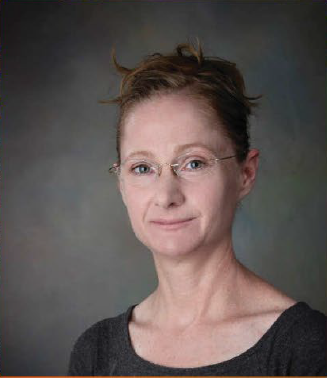X-ray Spectroscopy for High-energy-density Plasma Studies
X-ray Spectroscopy for High-energy-density Plasma Studies
The seminar will be conducted in person and simulcast via Zoom.
Passcode: MIPSE
Our next MIPSE seminar will be presented by Dr. Stephanie Hansen of Sandia National Laboratories. Her seminar, titled “X-ray Spectroscopy for High-energy-density Plasma Studies”, will be on Wednesday, March 6 at 3:30 pm in Room 1005 EECS. One of the challenges of high energy density (HED) plasmas is probing their interiors – little that originates in their interiors survives to be measured other than x-rays. In this seminar, Dr. Hansen will describe how x-ray spectroscopy can be used to probe and measure the fundamental properties of HED systems, from inertial confinement fusion to astrophysical objects. Please see attached flyer for details; this information is also posted on the MIPSE website.
Date and Time
Location
Hosts
Registration
-
 Add Event to Calendar
Add Event to Calendar
Speakers
Dr. Stephanie Hansen of Sandia National Laboratories
X-ray Spectroscopy for High-energy-density Plasma Studies
High-energy-density plasmas have pressures exceeding one million atmospheres and temperatures above ten thousand degrees. These ex-treme states of matter are present in diverse systems from inertial fusion targets to the hearts of stars. Measuring the precise conditions of these plasmas and predicting their atomic-scale properties play a key role in understanding system-scale behavior. This talk introduces X-ray spectroscopy, a powerful measurement technique that can identify the elemental composition of a plasma, constrain its temperature and density, and signal extreme magnetic and electric fields. It will also show how X-ray spectroscopy can help refine the designs of inertial fusion targets and increase our understanding of main sequence and white dwarf stars.
Biography:
Stephanie Hansen is a Senior Scientist in the Pulsed Power Science Center of Sandia National Laboratories. She studies the atomic-scale behavior of atoms in extreme environments and develops atomic, spectroscopic, equation-of-state, and transport models to help predict and diagnose the behavior of high energy-density plasmas. She is the author and developer of the SCRAM non-LTE spectroscopic modeling code and MUZE, a self-consistent field code used for equation-of-state, scattering, and transport calculations. Hansen was awarded an early-career grant from DOE to study material in non-equilibrium conditions in 2015, received the Presidential Early Career Award for Scientists and Engineers in 2017, and was elected a Fellow of the American Physical Society’s Division of Plasma Physics in 2019. She holds degrees in Physics and Philosophy from the University of Nevada, Reno and has been a Visiting Associate Professor at Cornell University since 2012.
An IEEE Southeastern Michigan Section event. All are welcome. Consider becoming an IEEE member if such similar events are of professional/academic interest to you


